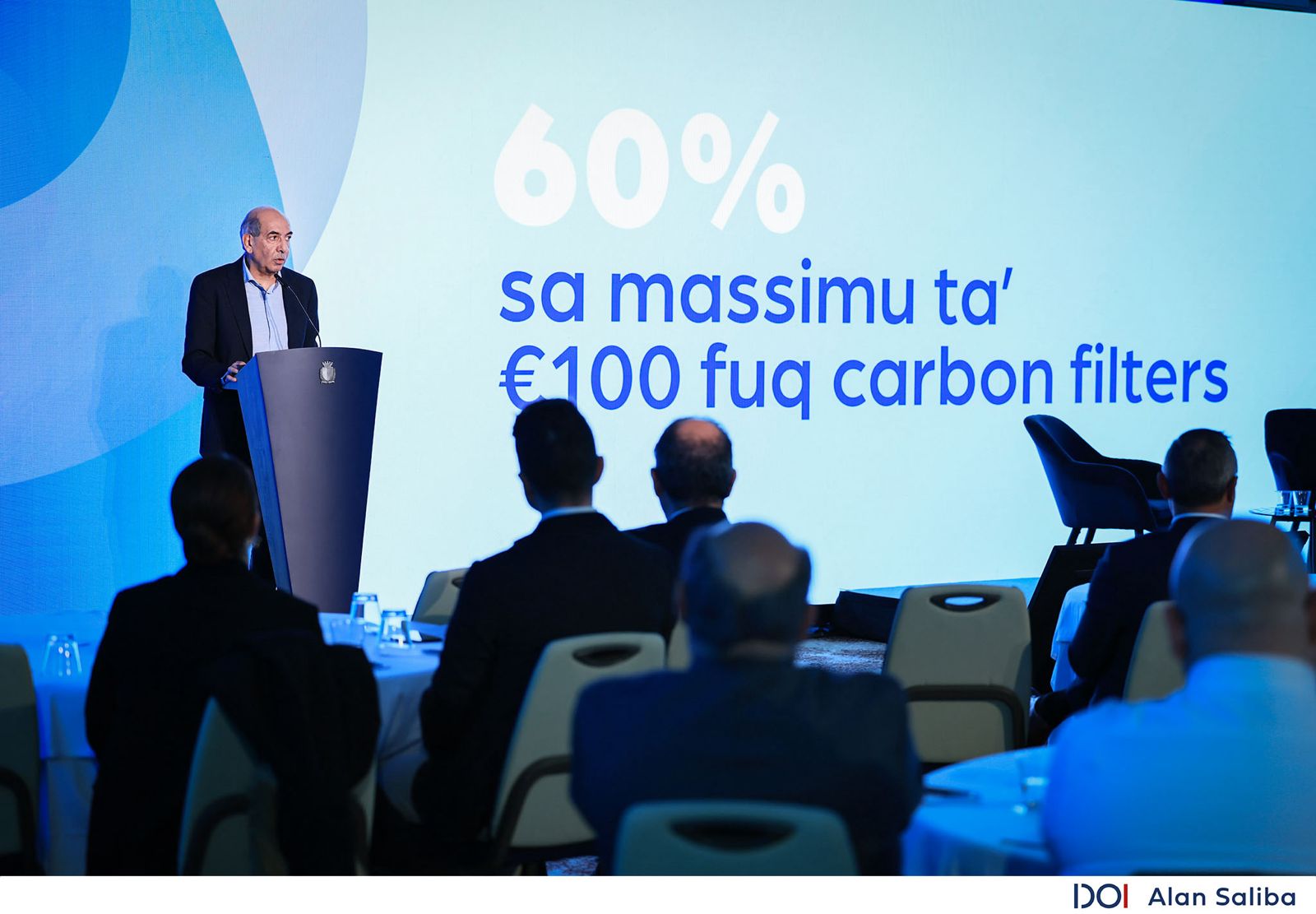Table of Contents
How is an activated carbon block made?
An activated carbon block work by trapping impurities on its surface.
Activated carbon is produced through a process that involves the exposure of carbon to extremely high temperatures, then washing it with chemicals or acid, which causes the activated carbon to develop an electrical charge. This activated carbon has billions of tiny pores in each block that attract, hold and "punch" out any toxins until it is saturated. That means activated carbon filters must be replaced or "topped-up" on a regular schedule to ensure that impurities don't leach back into the water supply.
The activation process increases the surface area of activated charcoal by up to 350 times, making activated carbon highly adsorptive.

An activated carbon filter can be an effective way to improve tapwater taste and remove impurities in tap water in Malta. Just 4 grams of activated carbon has a surface area the equivalent of a football field (6400 sqm). It’s the massive surface area that allows active carbon filters to be very effective in adsorbing (essentially removing) contaminants and other substances.
Activated carbon in the form of carbon blocks on the other hand usually have a pore size of between 0.5 to 10 micron. The problem with the smallest sizes is that the water flow ends up being reduced as even the water particles struggle to get through. Therefore the typical carbon blocks are between 1-5 micron, like the obes used in the TAPP ECoPro and TAPP EcoPro Compact water filters.
What does an activated carbon water filter remove?
According to EPA (the Environmental Protection Agency in the United States) Activated Carbon is the only filter technology recommended to remove
- all 32 identified organic contaminants including THMs (by-products from chlorine).
- all 14 listed pesticides (this includes nitrates as well as pesticides such as glyphosate also referred to as roundup)
- the 12 most common herbicides.
Activated carbon blocks are the most effective way to remove chlorine and chlorine by-products from public supply drinking water in Malta.
Summary of contaminants removed from drinking water by an activated carbon block:
- Chlorine
- Chlorine by products (THMs)
- Chloride
- Pesticides
- Herbicides
- Nitrate
- PFOS (Syntehtic chemicals used in manufacturing)
- Phosphates
- Lithium
- Pharmaceuticals
- Microplastics

Catalytic activated carbon - even more filtering.
Catalytic carbon is created by changing the surface structure of the activated carbon. A system of gas processing is used at high temperatures to change the electronic structure and create the highest level of catalytic activity and this additional catalytic functionality is much greater than that found in traditional activated carbons.
Catalytic activated carbn blocks like those used in the TAPP ECoPro and TAPP EcoPro Compact water filters also remove the following impurities:
- Chloramine
- Lead & Zinc
- Copper
- Heavy metals
- Arsnic
- Asbestos
- Flouride
- Microbial cyst
What about Limescale
The catalytic activated carbon blocks used in TAPP ECoPro and TAPP EcoPro Compact water filters also contain a proprietary substances that inhibits limescale so no more scaled up kettles and pans.
Advanced Microfiltration
TAPP Water filters have 5 stages of advanced microfiltration using catalytic activated carbon block technology and the process has been independently tested for Malta public supply drinking water.




![[WATCH] Malta's Tap Water Challenge: The Tappwater Solution. A Look at the Science, the Tests, and the Deliciously Clean Results.](http://tappwater.mt/cdn/shop/articles/Why_We_lab_tested_maltas_water_Sqaure.png?v=1756738451&width=1080)









0 comments